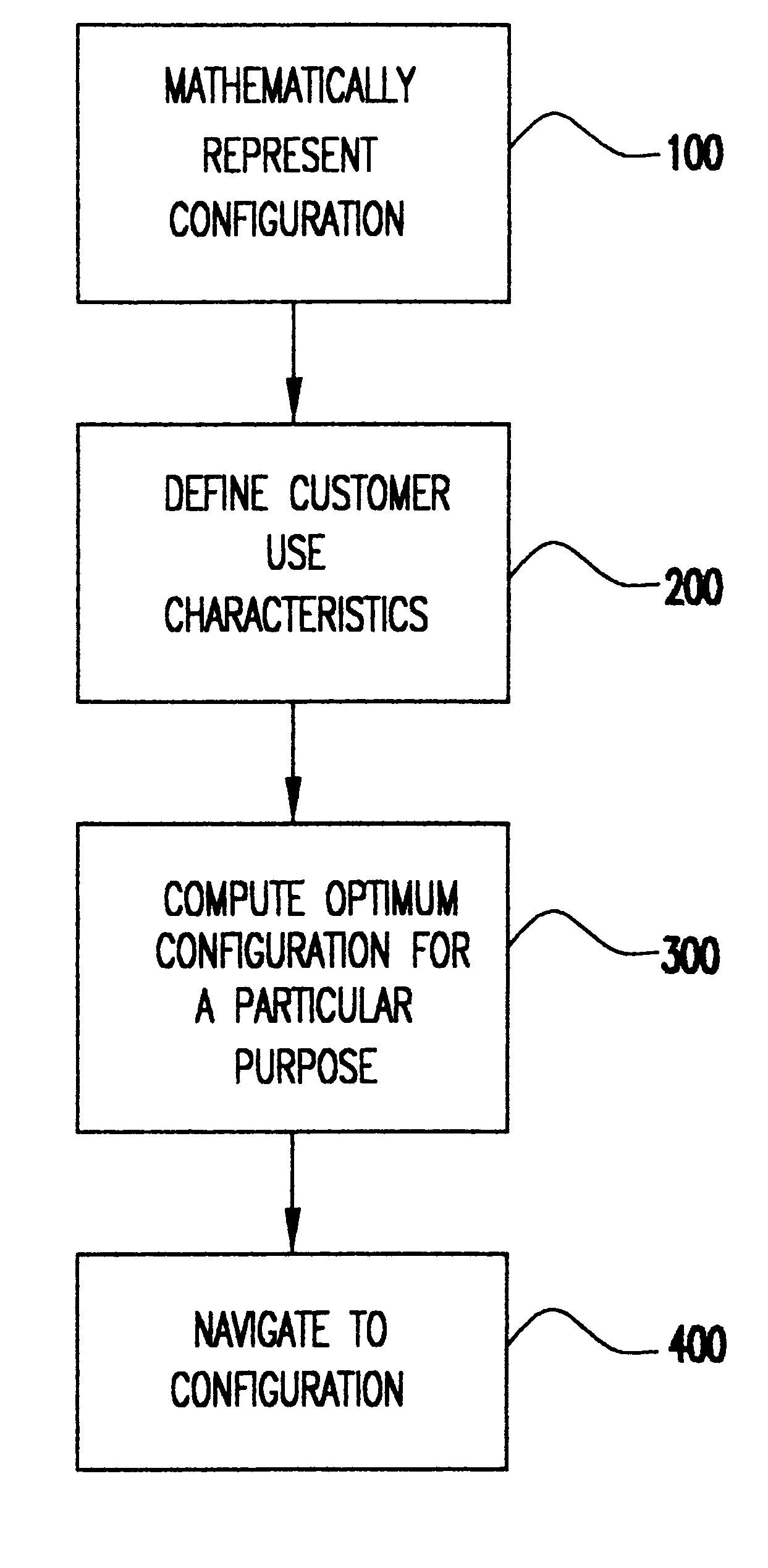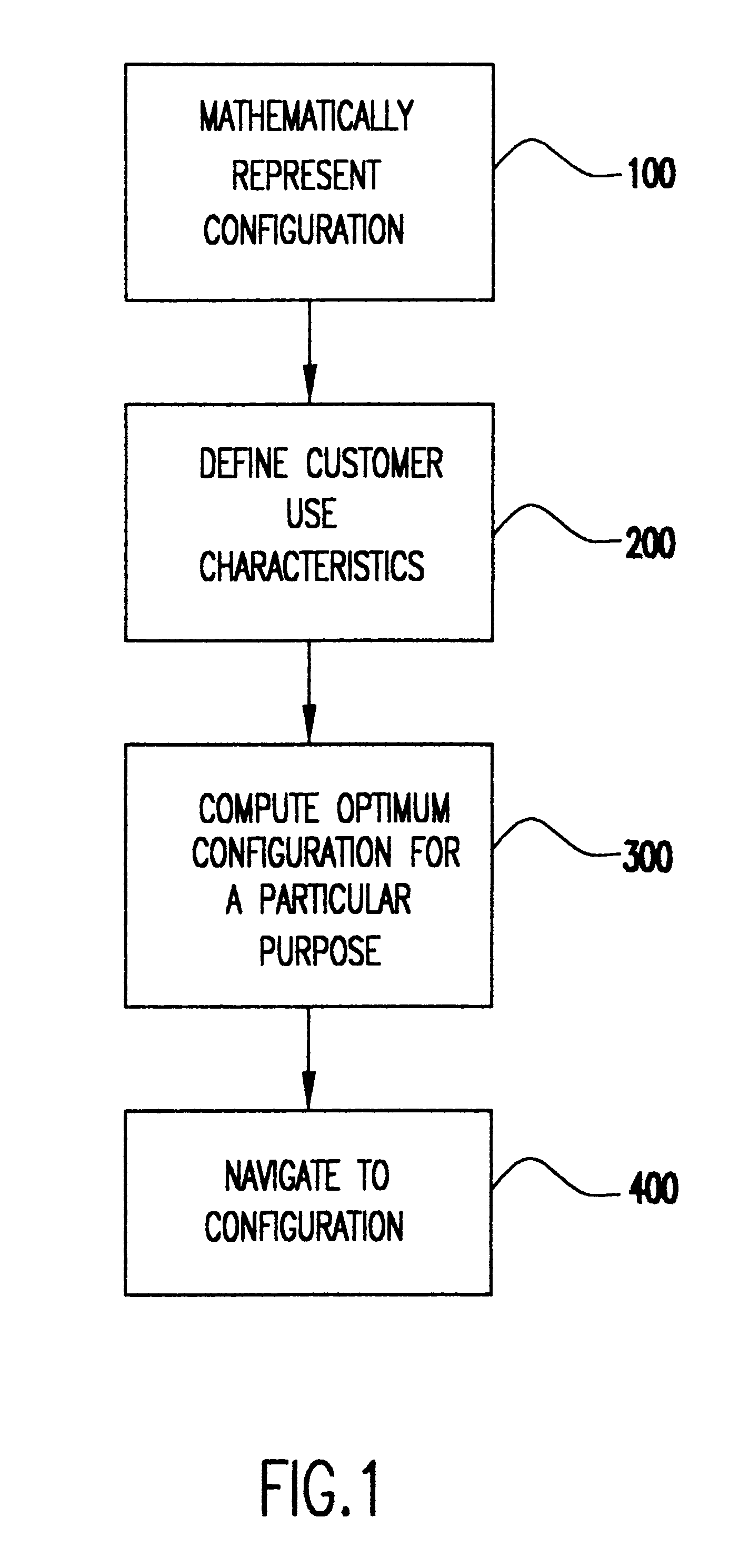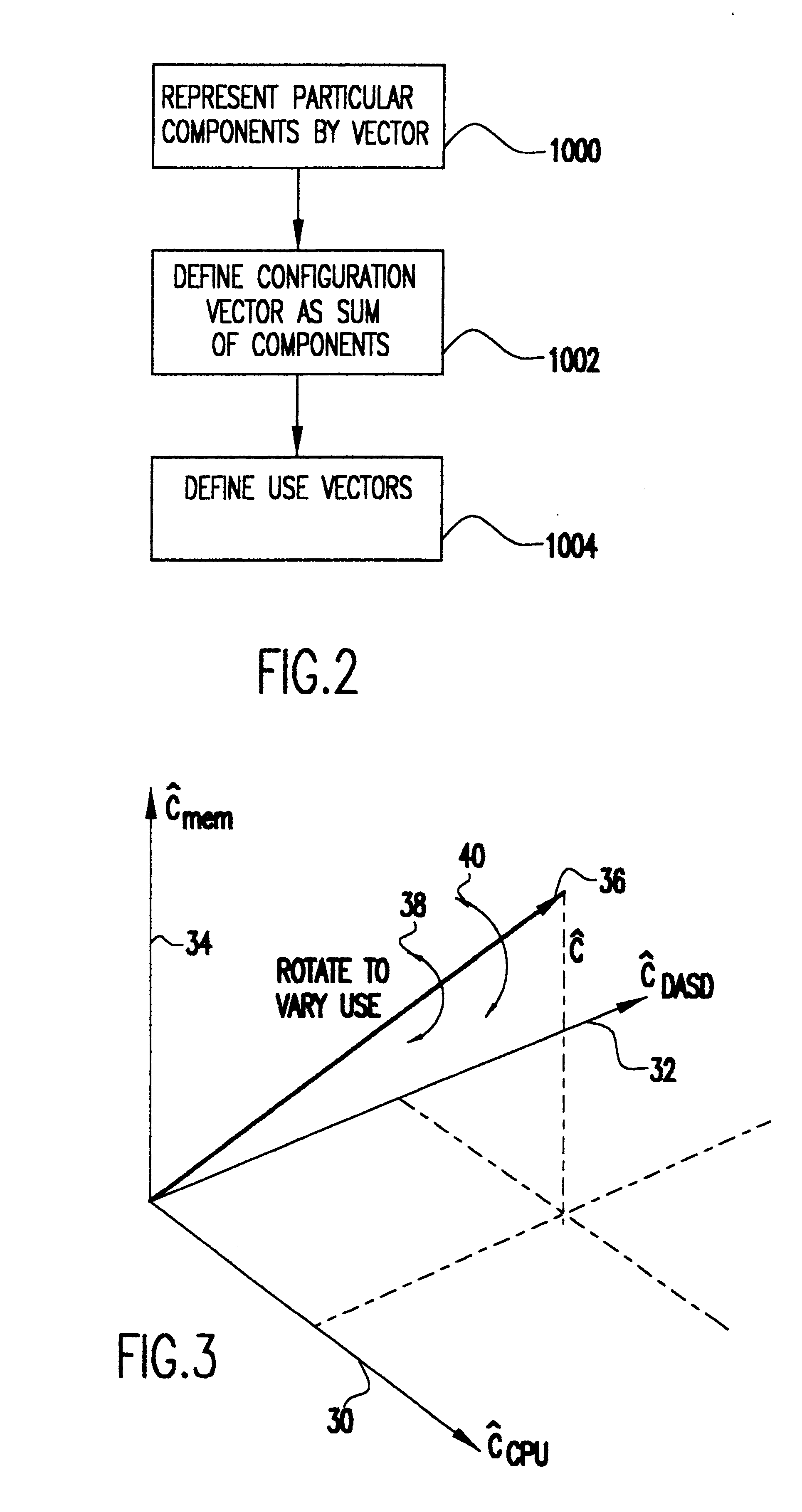Specifying complex device configeration through use characteristics
a technology of complex devices and use characteristics, applied in the field of customized complex device configurations, can solve the problems of limited customer choice to a limited set of configurations, unsatisfactory or satisfied customer wants and needs that vary from these configurations, and difficult direct customer selection of components
- Summary
- Abstract
- Description
- Claims
- Application Information
AI Technical Summary
Problems solved by technology
Method used
Image
Examples
Embodiment Construction
Referring now to the drawings, and more particularly to FIG. 1, there is shown a flow diagram that provides an overview of the method of the present invention. Each block will subsequently be discussed in further detail in the specification. In block 100, the configuration is represented mathematically. In block 200, customer use characteristics are defined, where there is a mapping from component set to customer use. In block 300, an optimum configuration for a particular purpose is computed from the use characteristics, where there is a mapping from customer use to component set. Finally, in block 400, the configuration may be navigated, where a configuration through use characteristics is selected.
Mathematical Representation
Referring now to FIG. 2, which shows block 100 in further detail, block 1000 shows that particular components are represented by a vector. In particular, the vector is defined as c.sub.ij =.vertline.c.sub.ij.vertline.c.sub.i, where the direction, c.sub.i, repr...
PUM
 Login to View More
Login to View More Abstract
Description
Claims
Application Information
 Login to View More
Login to View More - R&D
- Intellectual Property
- Life Sciences
- Materials
- Tech Scout
- Unparalleled Data Quality
- Higher Quality Content
- 60% Fewer Hallucinations
Browse by: Latest US Patents, China's latest patents, Technical Efficacy Thesaurus, Application Domain, Technology Topic, Popular Technical Reports.
© 2025 PatSnap. All rights reserved.Legal|Privacy policy|Modern Slavery Act Transparency Statement|Sitemap|About US| Contact US: help@patsnap.com



